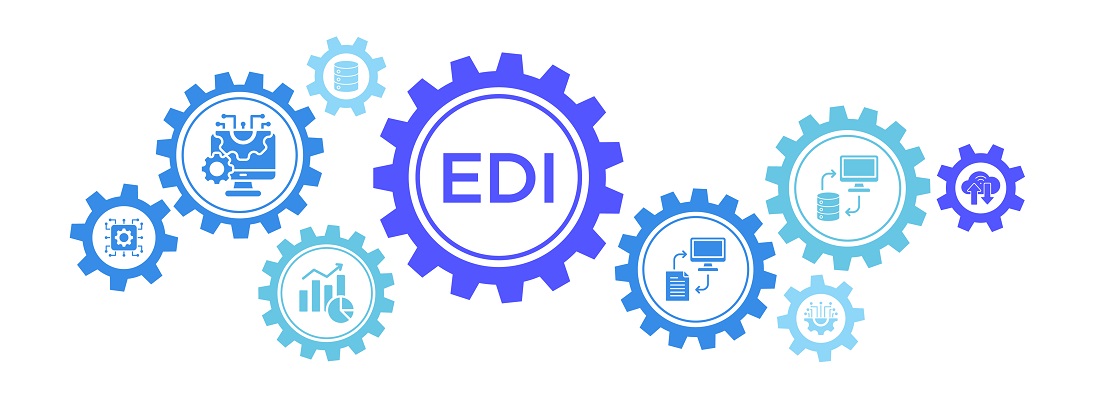These days, transferring data smoothly helps businesses work more efficiently. EDI is a method that makes it easier for companies to exchange important business papers such as invoices, purchase orders and shipping information over the Internet. But for EDI to work without problems, robust API testing must be put into place. This guide discusses the ways to integrate EDI, talks about the value of API testing and gives you the basics of testing to keep your data moving smoothly.
Understanding EDI Integration
EDI eliminates the inefficiencies of paper based transactions by replacing them with automated electronic communication. Imagine a world where invoices are sent and received electronically, no manual data entry and no errors. This saves time and resources and increases accuracy and speed.
But connecting your internal systems to your trading partners EDI systems requires a bridge – that’s where APIs come in. APIs act as the bridge, your internal applications (e.g. ERP system) can talk to the external EDI system using a set of defined protocols and messages. They translate data between formats so data can flow seamlessly.
Why API Testing is Critical for EDI Integration
Using API testing supports the protection of your EDI integration process. You would not use a bridge before it is checked, so it’s a bad idea to use an untested API for EDI integration. Here’s a look at what makes testing API vital:
- Data Integrity: EDI data holds vital business info. Bad API translations can mess up data causing delays in filling orders wrong payments, and tense business ties. Testing makes sure data maps between systems.
- Error Detection: Unexpected issues like wrong characters blank fields, or big data amounts can mess up the data flow. API testing helps spot these tricky cases and makes sure the API can handle them well.
- Security Concerns: EDI often deals with private info like financial data. API testing checks that the API follows safety rules and scrambles data when sending it keeping your business safe from security risks.
- Performance Optimization: When business is busy, your EDI system might see lots of transactions. Performance testing makes sure the API can handle these busy times without slowing down, stopping delays and problems.
- Reduced Downtime: APIs that aren't tested can cause surprise system crashes and downtimes hurting your business work. Testing ahead of time finds and fixes issues before they cause trouble.
By investing in thorough API testing, you can:
- Minimize errors: Issues are caught and fixed before real-world impact.
- Boost efficiency: Streamline data exchange mechanisms and eliminate any delay.
- Enhance data security: Protect sensitive information during transmission.
- Improve business relationships: Build trust among partners.
Essential API Testing Strategies for EDI Integration
Now that you understand the importance of API testing, let's delve into specific strategies to ensure your EDI integration functions flawlessly:
1. Test Different Scenarios: Do not limit testing to conventional data structures. Add edge cases that reflect actual usage scenarios. Below are a few examples:
- Empty Fields: Test missing data in certain fields, as received from the API. Should the API throw an exception, fill a default field, or ignore the field?
- Invalid Characters: What does the API do if special symbols or other strange characters show up in the data? Does it process them fine, or does it throw an error message?
- Large Data Volumes: Try testing rush-hour scenarios by flooding the system with lots of EDI data. Can the API manage it, or does its performance drop?
2. Focus on Data Mapping: EDI data formats (X12, EDIFACT, etc.) do not utilize the same data structures as your internal applications (relational databases, etc.). Check how the API maps data elements from one structure to the other. We want to pay special attention that important information (product codes, quantities, pricing, etc.) is properly mapped.
3. Security Testing: Security is top-most when working with sensitive information. Check the security features of the API:
- Authentication: Ensure that authorized users and systems alone are able to access the API.
- Authorization: Make sure users have the right permissions to do certain things.
- Encryption: Check that data is encrypted when it's sent to keep it safe from unauthorized access.
4. Performance Testing: Evaluate how the API performs when handling different levels of traffic. Create scenarios with various transaction loads and data amounts. Look out for weak spots in performance and adjust the API to run more.
5. Negative Testing: Focus on testing failures, not success cases. Provide the API with incorrect data weird formats, or meaningless inputs to observe its responses. This reveals possible weaknesses.
To learn more about how Infocon Systems can take care of your EDI needs, please don’t hesitate to give us a call at +1 888-339-0722 or email sales@infoconn.com. We’d love to hear from you.
FAQs (Frequently Asked Questions)
What is EDI integration, and why is it important?
EDI integration lets businesses send and receive documents such as invoices and purchase orders with trading partners. It cuts down on errors, saves time, and reduces the need for manual work. This improves how and supply chain tasks get done.
How does API testing relate to EDI integration?
The API test ensures that API EDIs are used to correctly transmit, change or validate data functions. In modern systems, APIs often serve as a bridge between legacy EDI platforms and cloud applications.
Why should I simplify EDI integration with APIs?
APIs help make EDI processes more modern and efficient. They also lower reliance on older VAN systems and add more options to handle real-time information. This plays a crucial role in keeping up with today’s supply chain needs.
What types of APIs are commonly used in EDI workflows?
Typical APIs include:
- Order Management APIs (e.g., receive/send EDI 850 or 875 documents)
- Inventory APIs
- Invoice Processing APIs
- Status/Tracking APIs
What are key strategies for API testing in EDI integration?
- Validate JSON/XML to EDI transformations
- Simulate trading partner responses
- Perform end-to-end workflow testing
- Use mock services for third-party systems
- Automate regression testing for recurring transactions
What are common challenges when testing EDI-related APIs?
- Handling complex EDI standards like X12 or EDIFACT
- Mapping errors between EDI and JSON formats
- Dependency on external systems or trading partners
- Data validation across systems
Which tools are commonly used for API testing in EDI environments?
Popular tools include:
- Postman
- SoapUI
- JMeter
- ReadyAPI
- Custom Python/Java test scripts integrated with CI/CD
How do I know if my EDI APIs are performing well?
Key performance indicators, or KPIs, include things like response time, how many transactions can be processed, error rates, and data accuracy. Load testing helps check how well a system can handle a lot of transactions at once.
What role does automation play in EDI API testing?
Automation helps conduct repeatable and consistent testing of EDI workflows, more so during frequent deployments and during onboarding of new trading partners. In addition, it helps in earlier defect discovery at the development phase.




